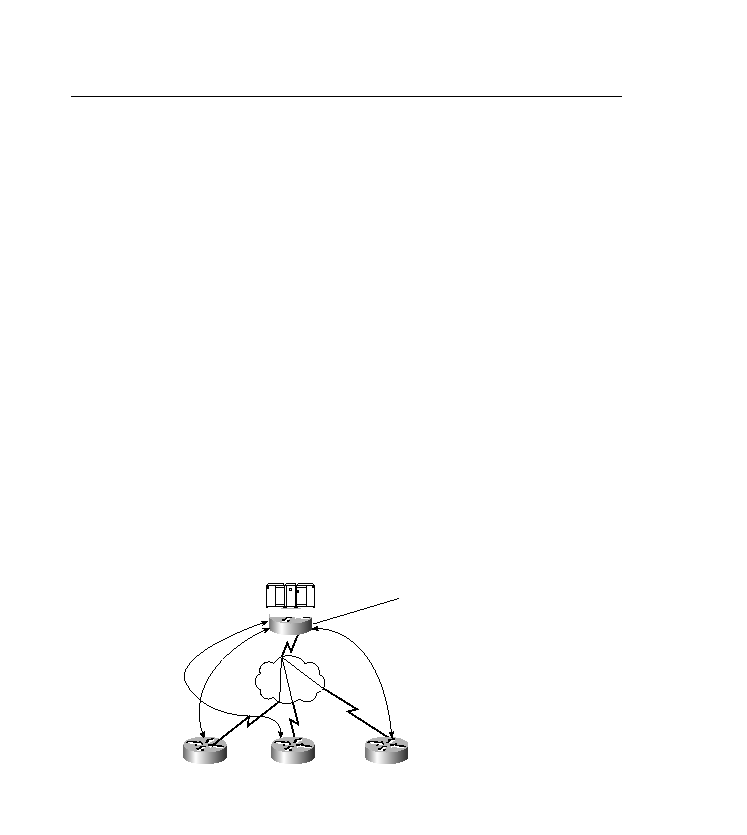
remote-site routers might necessitate more central-site routers to alleviate the processing
burden on the central-site router. More remote peers means more central-site routers.
However, if they are initiated from the central site, that could be a problem due to the
amount of CPU usage needed to generate a session.
placement. Peer placement usually depends on a combination of traffic load, multiprotocol
traffic volumes, backup scenarios, and encapsulation types. Let's take a look at four typical
methods to peer the routers:
in Figure 14-7. The central site typically has a 7500 or 7200 router with a CIP card
installed and directly attached to a mainframe. In this situation, the router performs
several functions:
communication with the mainframe. This is a solution for small SNA networks--
30 to 60 branches maximum. Because this solution represents the fewest
components, it is also the least-costly solution.